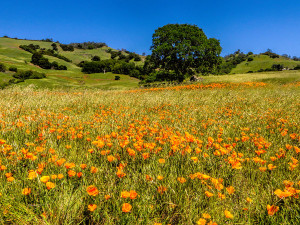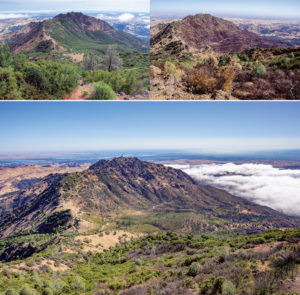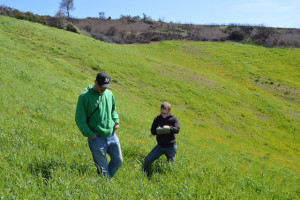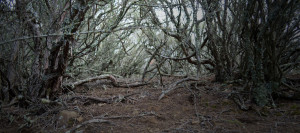ast spring was a banner year on Mount Diablo. The extra nutrients, space, and sunlight provided by a 3,100-acre fire made this wildflower mecca better than ever. Rare plants such as the Mount Diablo jewelflower were easier to find. Fields of lilies, poppies, and morning glories popped up in profusion. One of several fire-following plants that many visitors had never seen before, whispering bells, carpeted whole hillsides with its delicate yellow blossoms.
So what about this spring? As grasses and shrubs like chamise start to cover bare soils, are the fireworks over?
Well, wildflower displays on Mount Diablo aren’t likely to be as lavish as last year. But recovery from a fire takes at least three or four years. Plenty of discoveries still await visitors in this second spring. [Related: Best Places To Go | Fire Followers To Look For]
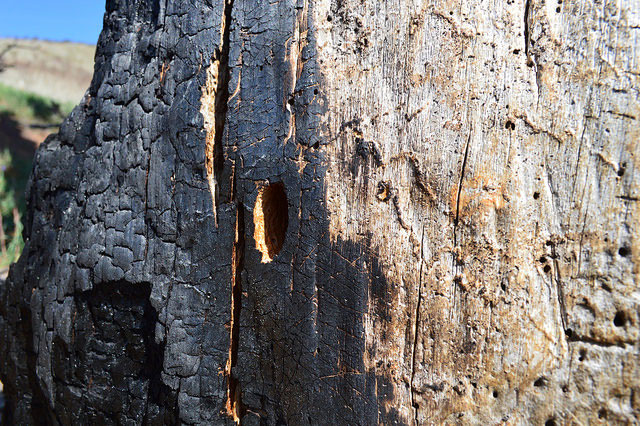
Take trees for example. Hundreds of gray pines died in the fire. But if you examine one of their blackened skeletons, you might find newly carved holes—just right for stashing an acorn. Looking skyward, you might see or hear the carpenter: a swooping, cackling acorn woodpecker.
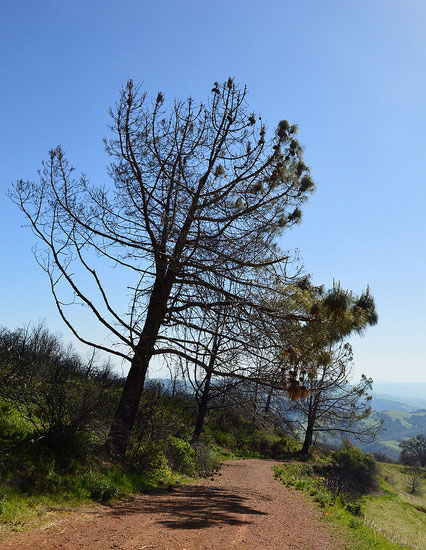
Occasionally you’ll run across a pine that has live needles on one side and charred branches on the other. What will be its fate? Maybe we’ll know next year. For now, it looks half dead and half alive.
Oaks generally fared better than pines. But some oaks are in limbo: on one side, leafing out from twigs as usual; on the other, leafing out only from larger branches and the trunk. Are the twigs on one side dead? How will the tree’s profile change? We’ll find out soon.
The legacy of older fires suggests another way in which trees may change. “Walking down a ridge from the summit to Juniper Camp, I’ve noticed trees with a Medusa head of a dozen or two dozen trunks, but I didn’t understand how they were created,” says Adams. “Now I can imagine that the original trunk was killed by fire and the tree put out many shoots below.”
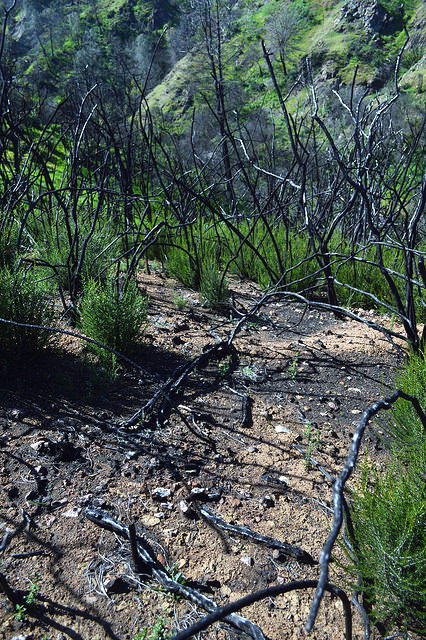
Even 18 months after the burn, small deserts remain under some oaks and pines. “Where burning trees have fallen, the ground is sterilized and remains for a time almost bare,” noted botanist Mary Bowerman in her 1944 classic, The Flowering Plants and Ferns of Mount Diablo California.

But bare soil is the exception. The dominant chaparral shrub on Mount Diablo—chamise—is coming on strong. Reduced to black skeletons after the fire, it’s now blanketing hillsides with its woody branches and needle-like leaves. Other species have popped up in the blackened chaparral, too, including lotus, sage, yerba santa, bush mallow, and colorful clumps of lupine, pop-pies, blue witch, bush sunflower, and wallflower. But chamise is taking up the most space.
What makes chamise so pushy? For one thing it’s a “stump sprouter,” which gives it advantages over plants that can only reproduce from seed. Stump sprouters can be repeatedly burned to the ground and still expand from their root systems after each fire. Moreover, stump sprouters are “relatively independent of the dry season,” according to Bowerman—a handy characteristic in a region entering its fourth year of drought.

This article is part of a monthly series of photos and articles on the transformation of Mount Diablo following the 2013 Morgan Fire, funded by special donations from Bay Nature readers. You can find our stories, as well as event listings, iNaturalist sightings, and magazine features, at baynature.org/diablo.
Other shrubs stump-sprout, too: among them oaks, bay, toyon, coyote bush, elderberry, and certain kinds of manzanitas. But none can also reproduce from seed quite as well as chamise. The second spring after a fire in 1931, Bowerman found anywhere from 49 to 130 chamise seedlings in her one-foot-square plots of chaparral. Chamise seedlings far outnumbered the progeny of any other chaparral species.
Some visitors single-mindedly pursue wildflowers on Mount Diablo in the spring. But this year Save Mount Diablo president Scott Hein has a broader mission: “I want to compare the plants and animals we saw in the burn zone the first year with what we are seeing now.”
In other words, don’t miss Act Two.
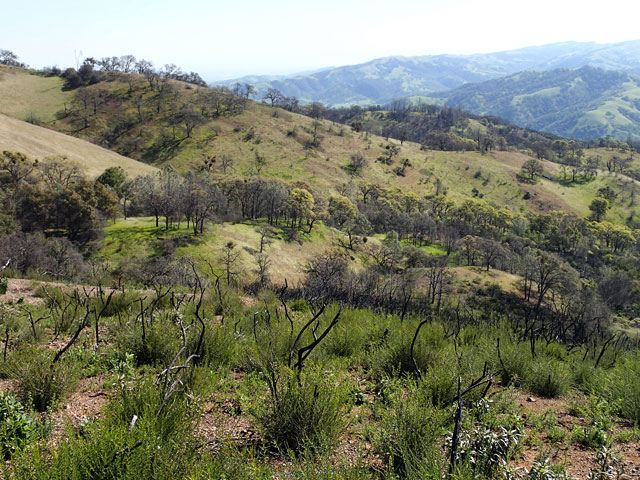
FIRE FOLLOWERS
Here’s a list of some unusual flowers that delighted Diablo watchers the first year after the fire. Will they still be around in year two?
1. Brewer’s red maids (Calandrinia breweri) is seldom seen on Mount Diablo, but was abundant the year after the fire. Named for botanist William Brewer who visited the mountain in the 1860s.
2. Fire poppy (Papaver californicum) A few were found on North Peak’s eastern slopes in 2014, yet there were millions on the north side after the 1977 fire. Will they reappear in 2015?
3. Whispering bells (Emmenanthe penduliflora) Abundant last year; already blooming in places this year, but is expected to be less abundant than last year.
4. Golden eardrops (Ehrendorferia chrysantha) Present but not nearly as abundant as whispering bells last year. Will it come back?
5. Mock parsley (Apiastrum angustifolium) This carrot family plant was abundant last year. Before that, however, it was last collected by Mary Bowerman in 1933.
[Back to top]
BEST PLACES TO GO
You’ll find easy access to burn sites in the following Mount Diablo State Park locations:
• North Peak Trail from Devils Elbow down to Prospectors Gap. From there, you can either head up to North Peak or down to the park boundary along the Prospectors Gap fire road.
• Green Ranch Road from Oak Knoll picnic area down to Rhine Canyon and Frog Pond.
• Perkins Canyon on Ray Morgan Road and Perkins Canyon Trail.


